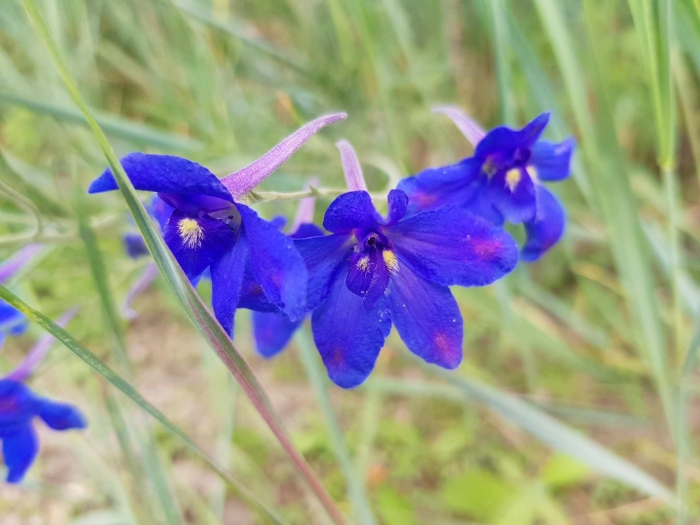Siberian Larkspur
(Delphinium grandiflorum)
Siberian Larkspur (Delphinium grandiflorum)
/
/

Urgamal Magsar
CC BY 4.0
Image By:
Urgamal Magsar
Recorded By:
Copyright:
CC BY 4.0
Copyright Notice:
Photo by: Urgamal Magsar | License Type: CC BY 4.0 | License URL: http://creativecommons.org/licenses/by/4.0/ | Rights Holder: Urgamal Magsar | Publisher: iNaturalist | Date Created: 2023-07-21T06:06Z |
























Estimated Native Range
Summary
Delphinium grandiflorum, commonly known as Siberian larkspur or Chinese delphinium, is a short-lived perennial herb that is often treated as an annual due to its unpredictability in returning each season. It is native to the grasslands and open woodlands of Siberia and northern China. This plant typically grows to about 12-24 inches tall and produces bright blue, purple, or white flowers in dispersed clusters during the early to mid-summer months. The flowers are notably showy and can appear fluorescent in sunlight, making them a striking addition to any garden.
Siberian larkspur is valued for its vibrant flower colors and is commonly used in ornamental gardens for border planting or as a feature in mixed beds. It requires full sun to partial shade and well-drained soil to thrive, with a preference for consistent, moderate moisture. While it can be a beautiful garden plant, it is important to note that all parts of Delphinium grandiflorum are toxic if ingested. Gardeners should handle the plant with care and be mindful of its placement, especially in gardens accessible to children and pets. Popular cultivars include ’Blue Butterfly’ with deep blue flowers and ’Summer Stars’ which features a mix of blue and white flowers. Despite its beauty, the plant can be susceptible to powdery mildew and other fungal diseases, especially in humid conditions.CC BY-SA 4.0
Siberian larkspur is valued for its vibrant flower colors and is commonly used in ornamental gardens for border planting or as a feature in mixed beds. It requires full sun to partial shade and well-drained soil to thrive, with a preference for consistent, moderate moisture. While it can be a beautiful garden plant, it is important to note that all parts of Delphinium grandiflorum are toxic if ingested. Gardeners should handle the plant with care and be mindful of its placement, especially in gardens accessible to children and pets. Popular cultivars include ’Blue Butterfly’ with deep blue flowers and ’Summer Stars’ which features a mix of blue and white flowers. Despite its beauty, the plant can be susceptible to powdery mildew and other fungal diseases, especially in humid conditions.CC BY-SA 4.0
Plant Description
- Plant Type: Herb
- Height: 1.25-2.25 feet
- Width: 0.75-1 feet
- Growth Rate: Moderate
- Flower Color: Blue
- Flowering Season: Summer
- Leaf Retention: Deciduous
Growth Requirements
- Sun: Full Sun
- Water: Medium
- Drainage: Medium
Common Uses
Bee Garden, Border Plant, Butterfly Garden, Deer Resistant
Natural Habitat
Native to the grasslands and open woodlands of Siberia and northern China
Other Names
Common Names: Blue Butterfly Delphinium, Cui Que, Jebigokkal, Chinese Delphinium
Scientific Names: , Delphinium grandiflorum, Chienia honanensis, Delphinastrum grandiflorum, Delphinium bonatii, Delphinium chinense, Delphinium grandiflorum, Delphinium grandiflorum f. album, Delphinium grandiflorum f. roseolum, Delphinium grandiflorum var. chinense
GBIF Accepted Name: